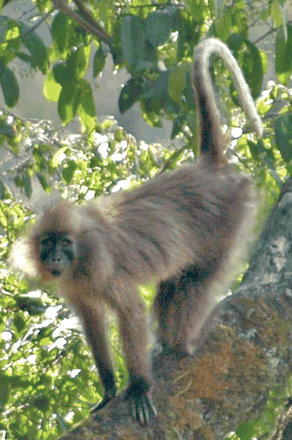New species descriptions could benefit from DNA barcodes
 A year ago in Science, Jones et al. described a new species of African monkey, Lophocebus kipunji, documenting their report with field observations, sound recordings, and photographs. This led to legalistic wrangling over whether the species could be said to exist if there was no specimen! Fortunately, the suspense is relieved by Davenport et al. in this month’s Science, in which they provide morphologic and DNA information based on a specimen recovered from a farmer’s trap. Although the authors relied on mitochondrial DNA evidence to establish the monkey belongs in a new genus, Rungwecebus, the actual sequence data is not listed among diagnostic characters in the species or genus description. Routine inclusion of DNA barcode sequences could improve the usefulness of formal species descriptions, assisting primate conservation efforts that monitor bushmeat trade, for example.
A year ago in Science, Jones et al. described a new species of African monkey, Lophocebus kipunji, documenting their report with field observations, sound recordings, and photographs. This led to legalistic wrangling over whether the species could be said to exist if there was no specimen! Fortunately, the suspense is relieved by Davenport et al. in this month’s Science, in which they provide morphologic and DNA information based on a specimen recovered from a farmer’s trap. Although the authors relied on mitochondrial DNA evidence to establish the monkey belongs in a new genus, Rungwecebus, the actual sequence data is not listed among diagnostic characters in the species or genus description. Routine inclusion of DNA barcode sequences could improve the usefulness of formal species descriptions, assisting primate conservation efforts that monitor bushmeat trade, for example.
Where is my barcode?
This entry was posted on Friday, May 19th, 2006 at 3:35 pm and is filed under General, Papers. You can follow any responses to this entry through the RSS 2.0 feed. Both comments and pings are currently closed.
August 3rd, 2007 at 6:56 pm
[…] cite DNA sequence differences as evidence for species status, the sequence data itself is usually not shown. Victor’s work is the first vertebrate species description that includes the holotype mtCOI […]